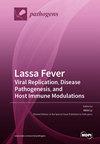The Diversity of Seed-Borne Fungi Associated with Soybean Grown in Southern Poland
IF 3.3
3区 医学
Q2 MICROBIOLOGY
引用次数: 0
Abstract
Fungi have the potential to colonize soybean seeds in the field, during their maturation in the pods and after harvest, during storage. The aim of this study was to identify fungi inhabiting soybean seeds after storage with varying germination capacity and to evaluate their chemical composition. The research material consisted of twelve soybean seed lots collected from the fields in southern Poland and stored over winter. The germination percentage of these lots ranged between 20.67% and 81.33%. The seeds were subjected to analyses of the main chemical components and mycological analysis. Fungal isolates were subjected to taxonomic identification using microscopic methods and DNA sequencing (using internal transcribed spacer region and secondary barcoding regions). A total number of 355 fungal isolates from 16 genera were identified, with Aspergillus, Alternaria, and Fusarium being the most common. Species were successfully identified in 94% of isolates. Twelve examined seed lots varied significantly in the number of isolated fungal species (from 1 to 17). Moreover, they also differed in the isolated species composition. Highly significant positive correlation was found between the number of Aspergillus psedudoglaucus isolates and the content of free fatty acids. In turn, the number of Fusarium spp. isolates correlated negatively with protein and nitrogen content. Similarly, highly significant negative correlation was found between the number of all fungal isolates and the 1000-seed weight, indicating that smaller seeds are more vulnerable to fungal infection. The results obtained in this study identify species of fungi which may be responsible for lowering quality of the seeds obtained in southern Poland.波兰南部大豆种子真菌的多样性
真菌有可能在大豆种子田间、豆荚成熟期和收获后的储藏过程中定植。本研究的目的是鉴定萌发能力不同的大豆种子在贮藏后栖息的真菌,并评估其化学成分。研究材料包括从波兰南部田间采集并经过冬季储藏的 12 批大豆种子。这些种子的发芽率在 20.67% 到 81.33% 之间。对种子进行了主要化学成分分析和真菌学分析。使用显微镜方法和 DNA 测序(使用内部转录间隔区和二级条形码区)对真菌分离物进行分类鉴定。共鉴定出来自 16 个属的 355 个真菌分离物,其中曲霉、交替孢霉和镰刀菌最为常见。94%的分离物成功鉴定出了菌种。12 个受检种子批次的分离真菌种类数量差异很大(从 1 种到 17 种不等)。此外,它们在分离出的菌种组成上也存在差异。结果发现,曲霉分离菌的数量与游离脂肪酸的含量呈高度正相关。而镰刀菌属分离物的数量与蛋白质和氮的含量呈负相关。同样,所有真菌分离物的数量与 1000 粒种子的重量之间也存在非常明显的负相关,这表明较小的种子更容易受到真菌感染。这项研究的结果确定了可能导致波兰南部种子质量下降的真菌种类。
本文章由计算机程序翻译,如有差异,请以英文原文为准。
求助全文
约1分钟内获得全文
求助全文
来源期刊

Pathogens
Medicine-Immunology and Allergy
CiteScore
6.40
自引率
8.10%
发文量
1285
审稿时长
17.75 days
期刊介绍:
Pathogens (ISSN 2076-0817) publishes reviews, regular research papers and short notes on all aspects of pathogens and pathogen-host interactions. There is no restriction on the length of the papers. Our aim is to encourage scientists to publish their experimental and theoretical research in as much detail as possible. Full experimental and/or methodical details must be provided for research articles.
 求助内容:
求助内容: 应助结果提醒方式:
应助结果提醒方式:


